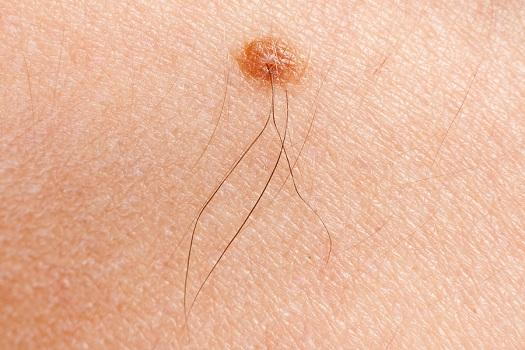For many people, the signs of disease don't appear until it's progressed. Skin cancer, however, often gives patients the unique advantage  of recognizing the problem early; the key is knowing what to look for. That's why Dr. Trent Massengale, Dr. Jessica LeBlanc, and Dr. Ashley Record of Atlas Dermatology in Baton Rouge and Prairieville, LA want their patients to understand how to spot the early signs of skin cancer so it can be evaluated and treated promptly. The three main types of skin cancer and their typical presentations are discussed here.
of recognizing the problem early; the key is knowing what to look for. That's why Dr. Trent Massengale, Dr. Jessica LeBlanc, and Dr. Ashley Record of Atlas Dermatology in Baton Rouge and Prairieville, LA want their patients to understand how to spot the early signs of skin cancer so it can be evaluated and treated promptly. The three main types of skin cancer and their typical presentations are discussed here.
Basal cell carcinoma
This slow-growing skin cancer, shortened to BCC, is the most common of all cancerous tumors, making up about 32% of cancer worldwide according to the National Cancer Institute. For most people, it appears on the skin that has received many years of sun exposure; for those who find it elsewhere, it may be due to genetics. Basal cell carcinoma often appears as a nodule, or bump, which may or may not be indented in the center. However, BCC can also look similar to eczema or acne scarring, which are both harmless skin conditions. This is why it's so important to see your Baton Rouge dermatology professional for an accurate diagnosis.
Squamous cell carcinoma
Like BCC, many squamous cell skin cancers are due to repeated exposure to UV rays. SCC is less common than BCC, but also brings with it a higher chance of invasiveness. Our dermatologists in Baton Rouge often see SCC presenting as a lump that may have an ulcer, or break in the skin, on top. However, it can take on many forms. Yearly skin checks at Atlas Dermatology will help identify any potential skin cancers and treat them accordingly.
Melanoma
Melanoma is by far the least common skin cancer, only accounting for 1% of all skin cancers, but it is, unfortunately, the most likely to spread to other places in the body, making it the most deadly. At Atlas Dermatology in Baton Rouge, we encourage patients to be vigilant about changes in their skin by remembering the "ABCDE" rule:
Asymmetry: One side of the mole or growth looks completely different than the opposite side
Borders: Instead of being smooth, the borders are "choppy" or uneven
Color: The mole has two or more colors throughout.
Diameter: The mole is larger than 5 millimeters around (about the size of a pencil eraser).
Evolving: Noticeable changes have occurred in the mole or growth over time.
If you need to schedule a full-body skin evaluation, contact Atlas Dermatology in Baton Rouge and Prairieville, LA to meet with Dr. Trent Massengale, Dr. Jessica LeBlanc, and Dr. Ashley Record. Making this part of your health routine is essential!
